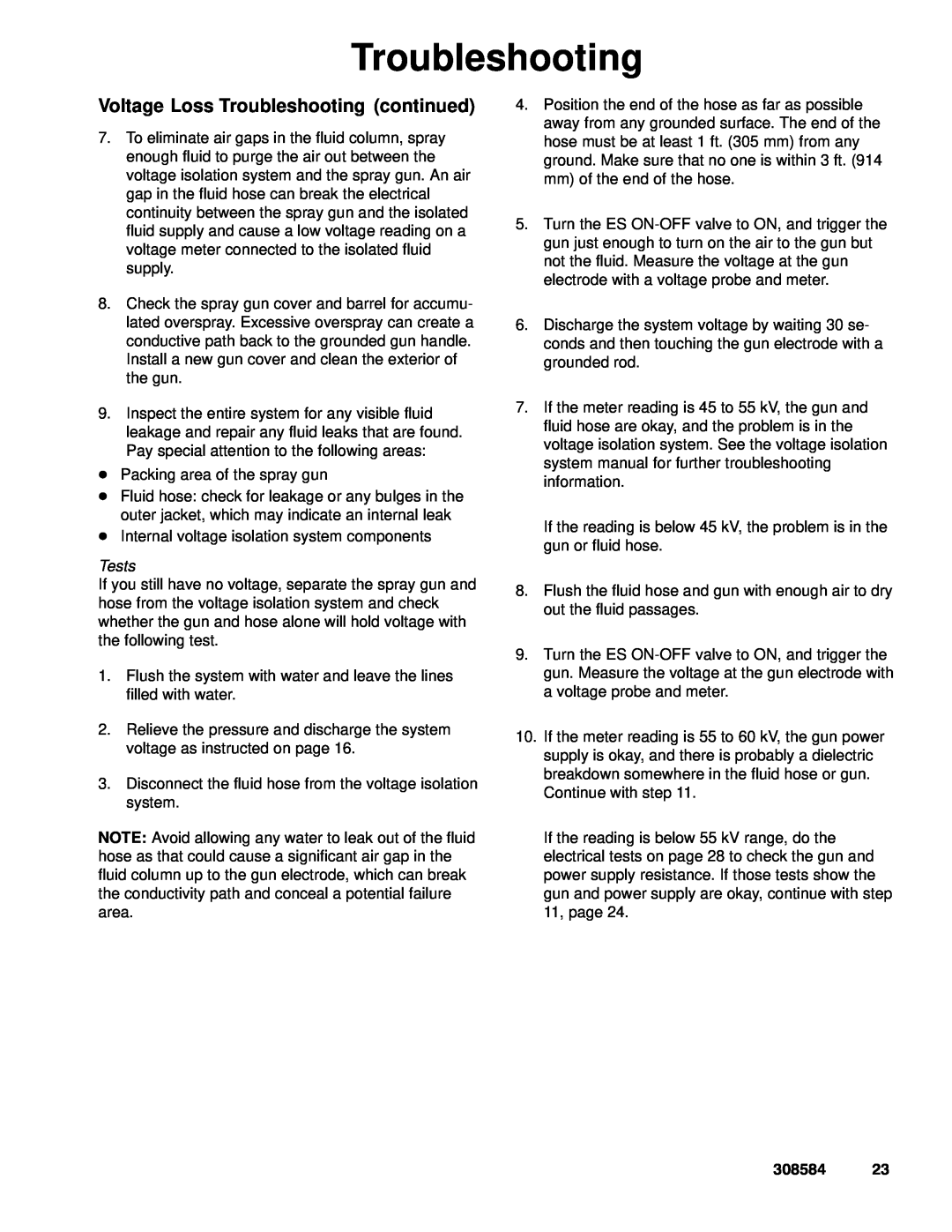Troubleshooting
Voltage Loss Troubleshooting (continued)
7.To eliminate air gaps in the fluid column, spray enough fluid to purge the air out between the voltage isolation system and the spray gun. An air gap in the fluid hose can break the electrical continuity between the spray gun and the isolated fluid supply and cause a low voltage reading on a voltage meter connected to the isolated fluid supply.
8.Check the spray gun cover and barrel for accumu- lated overspray. Excessive overspray can create a conductive path back to the grounded gun handle. Install a new gun cover and clean the exterior of the gun.
9.Inspect the entire system for any visible fluid leakage and repair any fluid leaks that are found. Pay special attention to the following areas:
DPacking area of the spray gun
DFluid hose: check for leakage or any bulges in the outer jacket, which may indicate an internal leak
DInternal voltage isolation system components
Tests
If you still have no voltage, separate the spray gun and hose from the voltage isolation system and check whether the gun and hose alone will hold voltage with the following test.
1.Flush the system with water and leave the lines filled with water.
2.Relieve the pressure and discharge the system voltage as instructed on page 16.
3.Disconnect the fluid hose from the voltage isolation system.
NOTE: Avoid allowing any water to leak out of the fluid hose as that could cause a significant air gap in the fluid column up to the gun electrode, which can break the conductivity path and conceal a potential failure area.
4.Position the end of the hose as far as possible away from any grounded surface. The end of the hose must be at least 1 ft. (305 mm) from any ground. Make sure that no one is within 3 ft. (914 mm) of the end of the hose.
5.Turn the ES
6.Discharge the system voltage by waiting 30 se- conds and then touching the gun electrode with a grounded rod.
7.If the meter reading is 45 to 55 kV, the gun and fluid hose are okay, and the problem is in the voltage isolation system. See the voltage isolation system manual for further troubleshooting information.
If the reading is below 45 kV, the problem is in the gun or fluid hose.
8.Flush the fluid hose and gun with enough air to dry out the fluid passages.
9.Turn the ES
10.If the meter reading is 55 to 60 kV, the gun power supply is okay, and there is probably a dielectric breakdown somewhere in the fluid hose or gun. Continue with step 11.
If the reading is below 55 kV range, do the electrical tests on page 28 to check the gun and power supply resistance. If those tests show the gun and power supply are okay, continue with step 11, page 24.
308584 23
